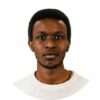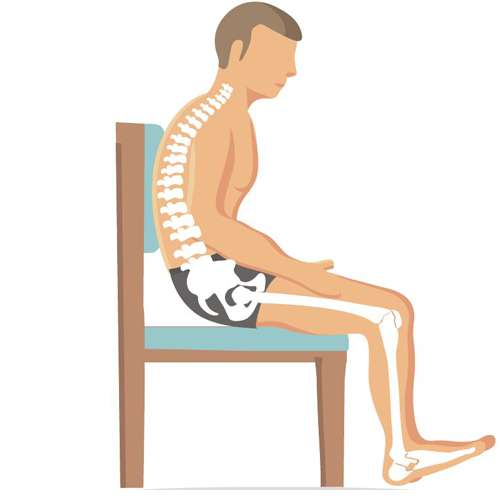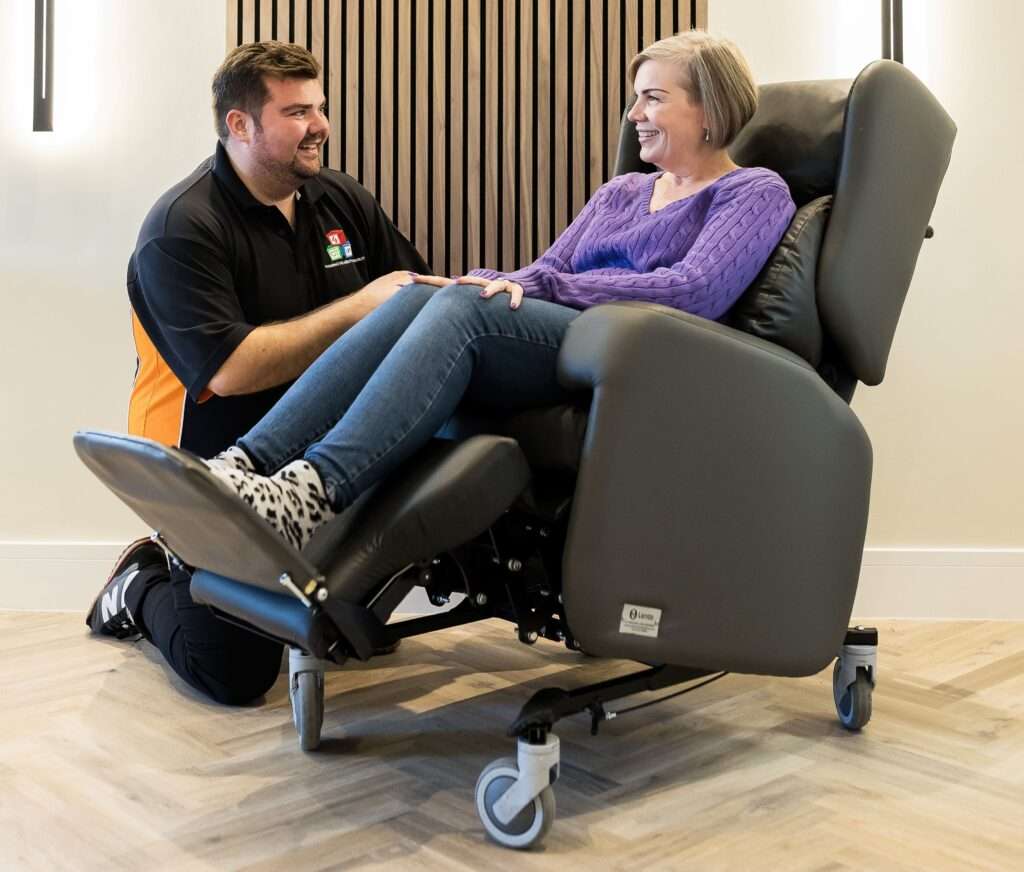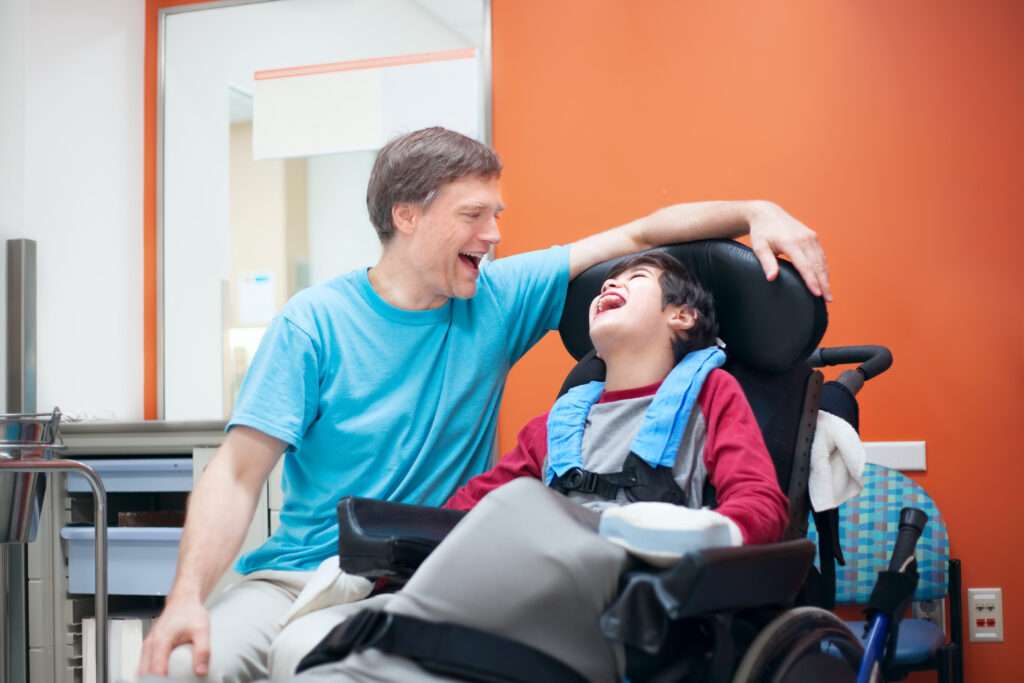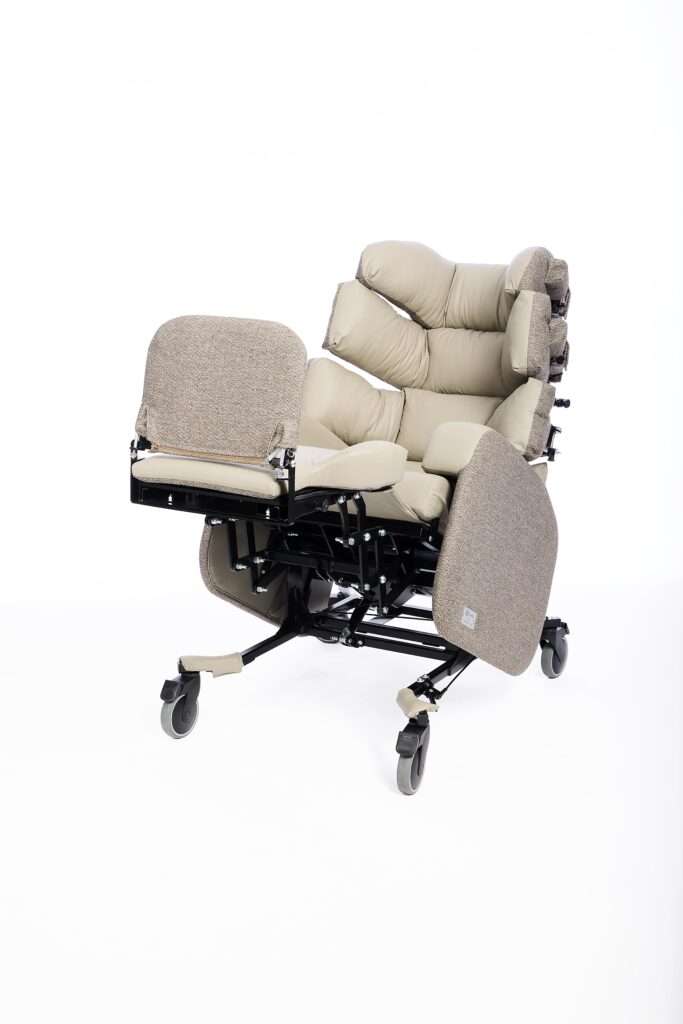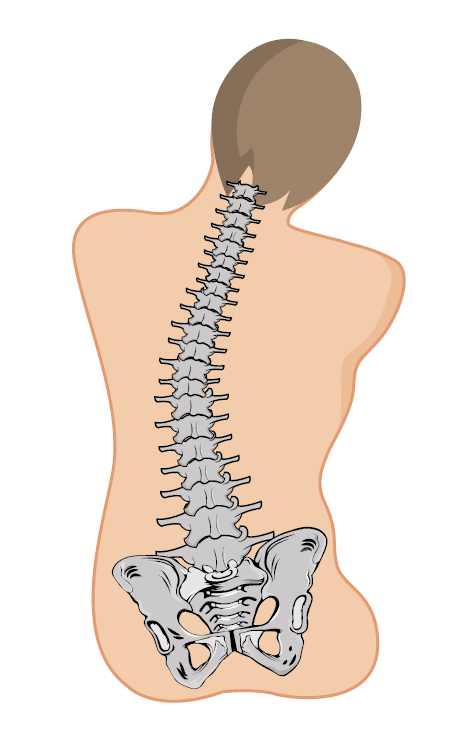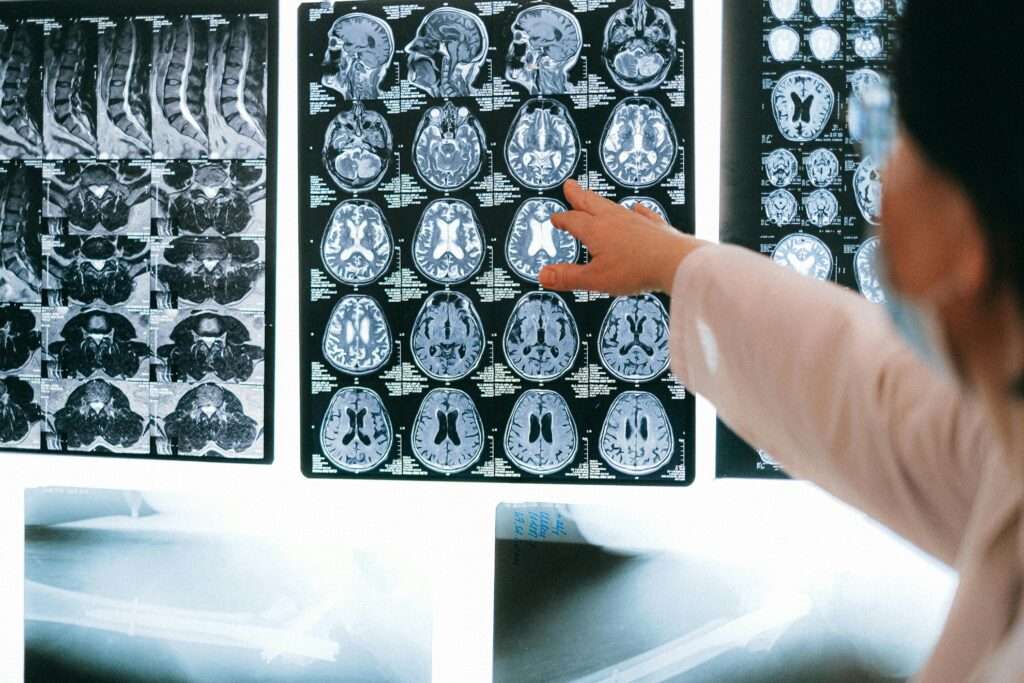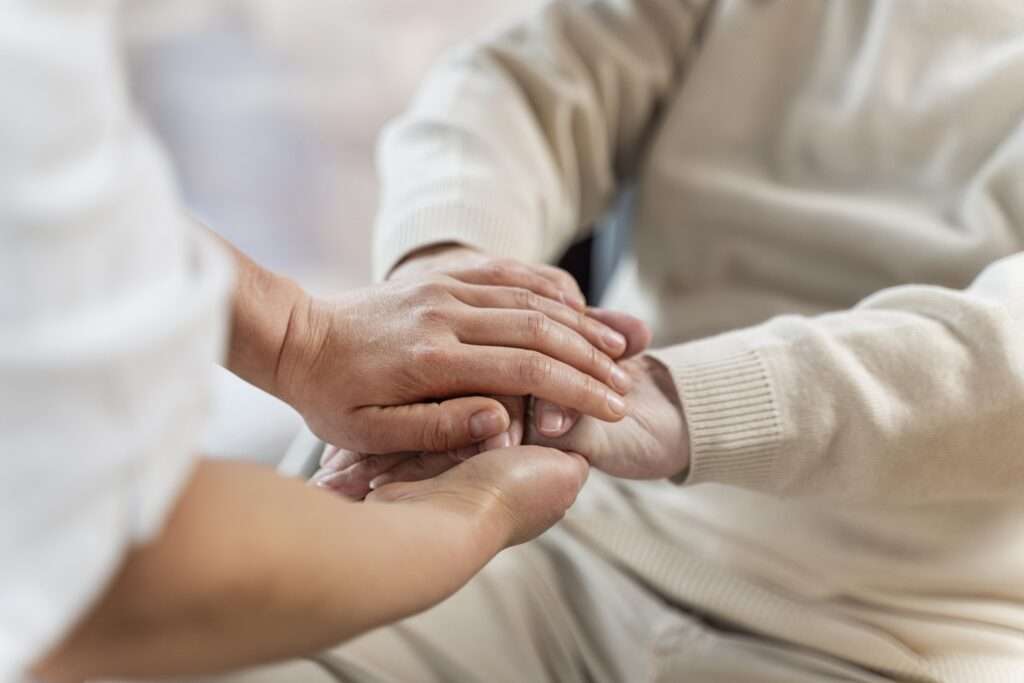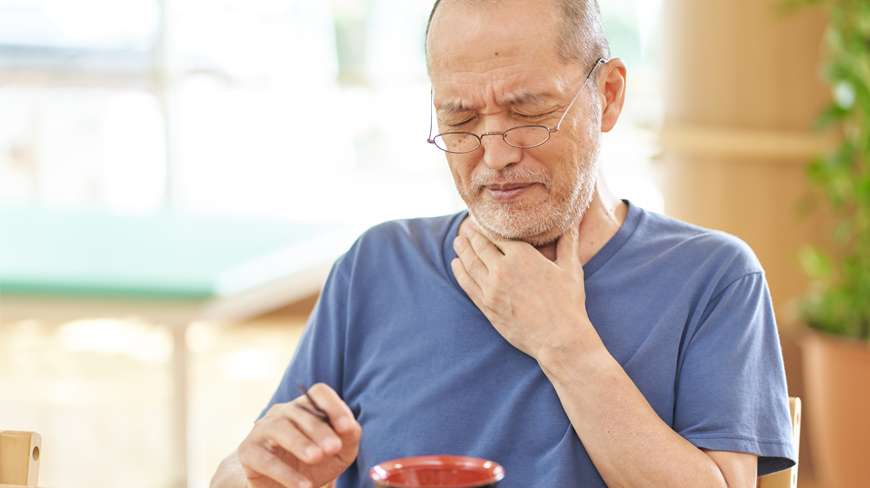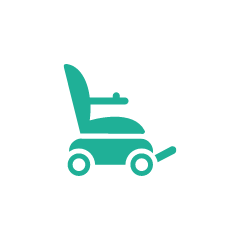What Is Kyphosis Disease – A Definition
Kyphosis (also called hunch-back or round-back) is a spinal deformity that occurs when the spine shows an excessive forward-facing curvature of the thoracic back bones (vertebrae), giving an abnormally rounded upper back appearance.
There are natural kyphotic curves in the thoracic part of the spine, they help with balance and stability, as well keep the head aligned over the pelvis.
Kyphosis is diagnosed if the natural curves in your thoracic spine are more than 50 degrees.
Treatment For Kyphosis
Most people with kyphosis disease don’t require treatment. Postural kyphosis can be improved by correcting poor posture and strengthening back muscles.
Surgical treatment may be recommended for curves more than 75 degrees.
If surgical treatment for kyphosis is required, then ‘Spinal Fusion’ is the treatment that is commonly used.
Surgical treatment may also be recommended when children born are born with this spinal deformity, (congenital kyphosis), or people with severely abnormally shaped vertebrae (Scheuermann’s kyphosis).
If left untreated, kyphosis can become severe and cause significant spinal deformity.
Jump straight to…
What Part Of The Spine Does Kyphosis Affect?
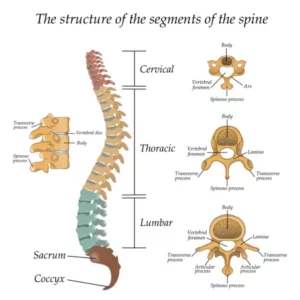
The spine consists of three segments:
- Cervical spine —
- The neck region of the spinal column or backbone
- Thoracic spine —
- The middle section of the spine. It starts at the base of the neck and ends at the bottom of the ribs.
- It’s the longest section of the spine.
- Lumbar spine —
- The lower back and consists of five vertebrae in the lower part of the spine, between the ribs and the pelvis
Kyphosis affects the middle thoracic section of the spine.
Types of Increased Thoracic Kyphosis
There are several different types of kyphosis to be aware of, we discuss them below.
What Is Postural Kyphosis?
Postural kyphosis, which is also known as ‘round-back’, is an increased kyphotic curve in the thoracic region of the spine greater than 50 degrees with normal-shaped vertebrae.
It is generally caused by poor posture, leaning in chairs, placing excessive strain on the spine etc.
This type is flexible and often improves with exercises and physical therapy. What Is Scheuermann’s Kyphosis?” answer-1=”Scheuermann’s kyphosis is a type of kyphosis where the vertebrae have become wedge shaped. This type is more rigid and can worsen with growth and is is usually first identified in adolescents during puberty.
Scheuermann’s kyphosis usually stops progressing once growing is complete.
What Is Congenital Kyphosis?
Congenital kyphosis refers to problems that developed with the spine before birth. Spinal bones that don’t form correctly before a person is born can cause kyphosis.
This is present at birth and the curve may become more noticeable with growth. This type usually needs surgery to correct at a young age to stop the curve from becoming worse.
A diagnosis of congenital kyphosis assumes a difference in the shape of one or more vertebrae.
Congenital kyphosis in children can be associated with certain medical conditions, such as Ehlers-Danlos syndrome.”
What Are The Causes & Risks of Increased Thoracic Kyphosis?
Increased thoracic kyphosis occurs when the cylinder like stacked vertebrae in a healthy spine start to become more wedge shaped.
Some of the causes of kyphosis can be linked to each other, for example, weakened bones can increase the propensity of fractures which can in turn change the structure of the spine leading to kyphosis.
This means that anyone who is susceptible to their vertebrae changing shape is susceptible to kyphosis.
What Are Vertebrae?
Vertebrae or “back-bones” are 24 small rectangular-shaped bones which are stacked on top of one another.
The average person is born with 33 individual vertebrae, by adulthood, most only have 24. This is because some vertebrae towards the bottom of the spine fuse together during normal growth.
The individual bones (vertebrae) that make up a healthy spine look like cylinders stacked in a column, and Kyphosis occurs when some vertebrae change shape and becomes more wedge shaped.
The shape of vertebrae can be changed by:
- Fractures & Injuries
-
-
- Injuries that weaken the spinal can put a person at a higher risk of developing kyphosis.
- Broken vertebrae can result in curvature of the spine.
- Compression fractures are the most common, these can occur in weakened bones.
- Mild compression fractures don’t usually produce noticeable signs or symptoms.
-
- Osteoporosis
-
-
- Weak bones can cause spinal curvature, especially if weakened vertebrae develop compression fractures.
- Osteoporosis is most common in older women and people who have taken corticosteroids for long periods of time.
-
- Disk degeneration
-
-
- Soft, circular disks act as cushions between spinal vertebrae.
- As a person grows older, these disks flatten & shrink, which increases the risk.
-
- Scheuermann’s disease
-
-
- Also called Scheuermann’s kyphosis.
- Typically begins during the growth spurt that occurs before puberty.
-
- Other problems
-
-
- Vertebrae that don’t develop properly before birth.
- Age can increase the chances of kyphosis as the spine begins to curve as a person gets older.
- Family members with kyphosis disease can increase your risk of developing a spinal curve.
-
Non-Surgical Treatment
But as most people do not need surgery for increased thoracic kyphosis. Nonsurgical treatment methods can help. The goal of treatment is to stop the curve from getting worse.
Nonsurgical treatment can include:
- Observation
-
-
- A doctor or assessor may recommend monitoring the curve to ensure it doesn’t worsen
- This may be through regular visits & x-rays
- Unless the curve gets worse, a patient may not need further treatment
-
- Bracing
-
-
- Bracing might be recommended for patients that are still growing
- Specific type of brace & how long it is worn for depends on how excessive the curve is
- The back brace will be adjusted as the curve improves
- Usually, the brace is worn until their skeleton matures and they are finished growing
-
- NSAIDSs
-
-
- Non-Steroidal Anti-Inflammatory Drugs
- Widely used medicine used to relieve pain & reduce inflammation
- Available as tablets, capsules, creams, gels & injections
-
- Physical Therapy
-
-
- Certain exercises can help improve alleviate back pain & improve posture
- Other muscles are also impacted
- Physical therapy can strengthen tight hamstrings etc.
-
Spinal Fusion
Spinal Fusion is essentially a welding process where the affected vertebrae are fused together so they will heal as a single, solid bone. This procedure will reduce the degree of the spinal curvature.
-
- A doctor will typically use metal screws and rods to help position the vertebrae in better alignment
-
- Once the vertebrae are better aligned, small pieces of bone – called bone grafts – are placed into the spaces between the vertebrae to be fused.
-
- Over time, the bones grow together, like how a broken bone heals.
-
- Only the curved vertebrae are fused together, so exactly how much of the spine is fused depends on the size of an individual’s initial curve
The goal of surgical treatment for kyphosis is for safe partial correction, this means making the curve smaller but not always making it normal. Ideally, the curve will be reduced by 50% of its initial magnitude.
Another benefit is, as the spinal fusion process eliminates motion between the affected vertebrae, this may also reduce/alleviate any back pain suffered.
Mobility After Surgery
The level of mobility that someone will have after a surgical procedure varies and depends on the level of the initial spine curve.
When surgery is done, other bones (the non-grafted ones) in the spine can still move and assist with bending, straightening, and rotation.
If left untreated or diagnosed later in life, there may be a larger curve. As larger curves need more vertebrae to be fused, there will be fewer mobile vertebrae left to allow spine bending and twisting.
In short, delayed treatment for a severe excessive curve of the thoracic spine can leave an individual with a lower range of mobility compared to surgical treatment for lower curvature. For this reason, it is best to assess for & diagnose kyphosis disease early where possible.
Complications
Several issues & complications can arise and can become worse if the increased thoracic kyphosis is not diagnosed & treated
Limited physical functions
Kyphosis disease is associated with weakened back muscles and difficulty doing tasks such as walking and getting out of chairs. The spinal curvature can also make it difficult to gaze upward or drive and can cause pain when you lie down.
Digestive problems
Severe cases can compress the digestive tract, causing problems such as acid reflux and difficulty with eating, drinking and swallowing if a patient is unable to safely position themselves to do so.
Body image problems
People with increased thoracic kyphosis, particularly adolescents, (the common age of diagnosis), may have poor body image from having a rounded back. A person with increased thoracic kyphosis may have a line of vision looking towards the floor which can adversely impact their interaction and life quality.
Other medical conditions
-
-
- Kyphosis in children can also be associated with certain medical conditions, such as Ehlers-Danlos syndrome.
-
Long Term Impacts of Increased Thoracic Kyphosis
Early diagnosis is important as many patients can be effectively treated without requiring surgery and usually go on to lead active, healthy lives. If allowed to progress, however, it could potentially lead to problems during adulthood.
Individuals and doctors must regularly monitor the condition and check the progression of the curve, regardless of whether it is treated with surgery.
Seating For Kyphosis
Finding appropriate seating for individuals with increased thoracic kyphosis is extremely important. From the positioning of the hips and head, to the back angle necessary for relieving pressure. For more information on this, take a look at our overview on the best seating for kyphosis.
For information on seating solutions, download our free ‘Healthcare Professional’s Complete Guide to Specialist Seating Assessments’ eBook.
Alternatively, you can also contact us directly and speak to our qualified assessors to help find what’s right for you.
FAQs
Q: What is kyphosis?
A: Kyphosis is an excessive forward curve of the upper spine, creating a rounded or hunched back.
Q: What are the symptoms?
A: A rounded upper back, stiffness, muscle fatigue, and sometimes pain. Severe cases may affect breathing.
Q: How do you fix kyphosis?
A: Postural kyphosis often improves with exercises, stretching, and better ergonomics. Structural or severe cases may need physical therapy, bracing, or medical treatment. Always consult a healthcare professional.
Q: Can exercises help?
A: Yes, strengthening the upper back and core, and stretching the chest, can improve posture-related kyphosis.
Q: Is kyphosis reversible?
A: Postural kyphosis is often reversible. Structural forms can be managed but not fully reversed.
Q: When should I see a doctor?
A: If the curve worsens, causes significant pain, affects breathing, or limits daily activities.
Q: Is kyphosis the same as scoliosis?
A: No – kyphosis curves forward, scoliosis curves sideways.




